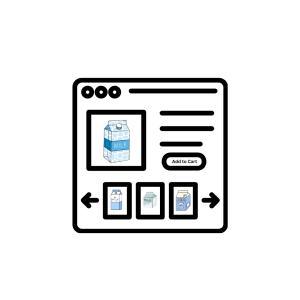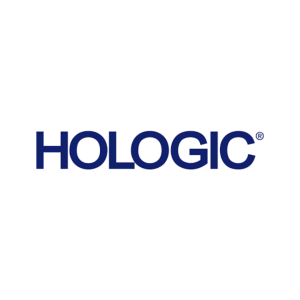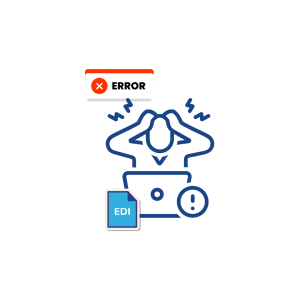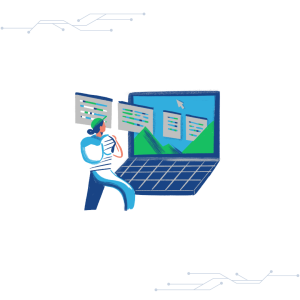Introduction
The two prominent solutions for product data management are the Global Data Synchronization Network (GDSN) and Product Information Management (PIM) systems.
While both serve the purpose of handling product data, they operate differently and cater to distinct business needs.
Let us compare the functionalities, pros, and cons of GDSN and PIM, to determine which solution aligns best with your business objectives.
Key Takeaways
Definition and Purpose:
- GDSN (Global Data Synchronization Network) ensures accurate, up-to-date product information across supply chain partners globally by facilitating real-time data synchronization.
- PIM (Product Information Management) is a centralized system for managing product data across various channels, ensuring consistency and accuracy in product information.
Core Differences:
- Scope: GDSN focuses on global synchronization of product data, while PIM emphasizes internal management and distribution of product data across multiple platforms.
- Data Management: GDSN relies on standardized, global formats (e.g., GS1 standards) for data exchange, whereas PIM systems offer more flexible, customizable data structures.
Integration:
- Companies can integrate both GDSN and PIM to optimize product information management, enabling seamless data sharing across internal systems and external trading partners.
Use Cases:
- GDSN: Best suited for businesses that need to ensure compliance with global data standards and streamline data sharing with trading partners.
- PIM: Ideal for businesses looking to manage detailed product data internally and distribute it across multiple channels (e-commerce, retailers, marketing platforms).
Business Benefits:
- GDSN improves data accuracy and compliance in global supply chains, reducing errors and improving partner collaboration.
- PIM enhances internal efficiency, ensuring that product information is consistent, accurate, and ready for various sales and marketing platforms.
Choosing the Right Solution:
- Businesses should evaluate their data management needs, trading partner requirements, and internal processes to determine whether GDSN, PIM, or a combination of both is the best fit for their operations.
Understanding GDSN and PIM
What is GDSN?
The Global Data Synchronization Network (GDSN) is an interconnected system of interoperable data pools that enables businesses worldwide to exchange standardized product information seamlessly. Managed by GS1, a global standards organization, GDSN ensures that product data is accurate, consistent, and up-to-date across all trading partners. It facilitates real-time data synchronization, reducing errors and enhancing supply chain efficiency.
What is PIM?
Product Information Management (PIM) is a centralized system designed to manage and maintain product data within an organization. PIM solutions consolidate product information from various sources, ensuring consistency and accuracy across multiple sales channels, such as e-commerce platforms, marketplaces, and print catalogs. By streamlining data management, PIM systems enhance the efficiency of marketing, sales, and operational processes.
Comparison Table: GDSN vs PIM
Aspect | GDSN | PIM |
|---|---|---|
Primary Function | Facilitates the global exchange and synchronization of standardized product data between trading partners | Centralizes product information management within an organization, ensuring consistency across all channels |
| Scope of Use | Primarily used to connect suppliers and retailers to sync product data | Utilized for both B2B and B2C operations, especially in marketing and e-commerce |
| Data Standardization | Enforces standardized data formats as per GS1 guidelines | Allows customization of data fields to fit specific business needs |
| Integration Capabilities | Integrates with data pools and trading partner systems globally | Integrates with various internal systems like ERP, CRM, and e-commerce platforms |
| Real-Time Synchronization | Offers real-time data synchronization across all registered partners | Synchronization depends on integration setups and may not always be real-time |
| Data Ownership | Data is shared and synchronized among multiple external partners | Data is owned and managed internally within the organization |
| Implementation Complexity | Requires adherence to GS1 standards and coordination with multiple partners | Implementation complexity varies based on customization and integration requirements |
| Cost Structure | Typically involves subscription fees for data pools and compliance costs | Costs include software licensing, implementation, and maintenance |
| Data Validation | Ensures data quality through standardized validation processes | Offers customizable validation rules based on business requirements |
| Scalability | Scales effectively for businesses with extensive global trading networks | Scales to accommodate growing product lines and multiple sales channels. |
| User Accessibility | Access is primarily for authorized trading partners | Accessible to internal teams like marketing, sales, and product management |
| Customization | Limited customization due to adherence to global standards | Highly customizable to meet specific business needs and workflows |
| Data Enrichment | Focuses on standardized data without extensive enrichment capabilities | Allows for detailed data enrichment to enhance product descriptions and attributes |
| Reporting and Analytics | Limited reporting focused on data synchronization status | Advanced reporting and analytics on product performance and data quality |
| Compliance | Ensures compliance with global data standards and regulations | Compliance features depend on the specific PIM solution and configuration |
| Security | Secure data exchange protocols are in place for data transmission | Security measures vary based on the PIM provider and internal policies |
| Vendor Ecosystem | Supported by GS1-certified data pools and a network of trading partners | Supported by various software vendors offering diverse features and integrations |
| Maintenance | Maintenance involves ensuring ongoing compliance with GS1 standards | Regular updates and maintenance based on software provider releases and internal needs |
| Time to Value | Quick setup for businesses already aligned with GS1 standards | Time to value varies based on customization and integration efforts |
| Use Case Flexibility | Best suited for businesses focused on data synchronization with external partners | Versatile for managing internal product data across various departments and channels |
Pros and Cons of GDSN
Pros:
Global Standardization: Ensures consistent and accurate product data across all trading partners.
Real-Time Synchronization: Facilitates instant updates, reducing errors and discrepancies.
Enhanced Supply Chain Efficiency: Streamlines data exchange, improving overall supply chain operations.
Compliance Assurance: Adheres to GS1 standards, ensuring global compliance.
Scalability: Easily accommodates growth in trading partners and product lines.
Learn more – 100 Benefits of GDSN
Cons:
Limited Customization: Adherence to global standards restricts flexibility in data formats.
Implementation Complexity: Requires coordination with multiple partners and adherence to GS1 guidelines.
Cost Implications: Subscription fees may vary for different data pools.
Limited Internal Data Management: Focuses on external data synchronization rather than internal data enrichment.
Pros and Cons of PIM
Pros:
Centralized Data Management: Consolidates all product information in a single repository.
High Customization: Tailors data fields and workflows to specific business needs.
Enhanced Data Quality: Enables detailed data enrichment and validation for superior product information.
Multi-Channel Consistency: Ensures uniform product data across all sales and marketing channels.
Advanced Reporting: Provides insights into product performance and data quality metrics.
Learn more – 25 Benefits of PIM Solution
Cons:
Implementation Costs: Initial setup, customization, and integration can be costly and time-consuming.
Complex Integration: Requires seamless integration with various internal systems like ERP and CRM.
Maintenance Efforts: Ongoing updates and maintenance are necessary to keep the system effective.
Learning Curve: Teams may require training to utilize PIM functionalities effectively.
Scalability Limitations: Some PIM solutions may struggle with extremely large product catalogs or complex data structures.
Conclusion
GDSN and PIM play pivotal roles in product data management, but they serve different purposes and cater to distinct business needs. GDSN is ideal for businesses looking to standardize and synchronize product data across a global network of trading partners, enhancing supply chain efficiency and ensuring compliance with international standards. On the other hand, PIM is essential for organizations that require centralized management of detailed product information, enabling consistent and enriched data across multiple sales and marketing channels.
In many cases, businesses may benefit from implementing both GDSN and PIM to cover both external data synchronization and internal data management needs comprehensively. Assessing your organization’s specific requirements, scalability needs, and integration capabilities will guide you in choosing the right solution or combination of solutions to optimize your product data management strategy.
Commport Datapool Solutions
Download: GDSN Buyers Guide
Empower your business with global data synchronization; download our GDSN Buyer's Guide today and take the first step towards streamlined, accurate, and compliant product data management.
Frequently Asked Questions
Yes, GDSN and PIM can be integrated to leverage the strengths of both systems. PIM manages and enriches internal product data, while GDSN ensures this standardized data is synchronized with external trading partners. This integration provides a comprehensive solution for both internal and external data management needs
For e-commerce businesses, PIM is generally more suitable as it centralizes product information, ensuring consistency across various online platforms and marketing channels. However, if the e-commerce business also engages in extensive B2B transactions, integrating GDSN can enhance data synchronization with business partners.
Industries with complex supply chains and extensive B2B transactions, such as retail, manufacturing, and healthcare, benefit the most from using GDSN. It ensures accurate and standardized product data across global trading partners, enhancing supply chain efficiency and compliance.
While GDSN offers significant benefits for large-scale operations with multiple trading partners, small businesses may not find it essential unless they engage in extensive B2B transactions requiring standardized data synchronization. For smaller operations, a PIM system might be more beneficial for managing internal product information.
PIM improves customer experience by ensuring that product information is accurate, detailed, and consistent across all channels. This leads to better-informed customers, reduced errors, and a more seamless shopping experience, ultimately enhancing customer satisfaction and trust.
When selecting a PIM system, consider features such as data centralization, customization capabilities, integration options with other systems (ERP, CRM, e-commerce platforms), user-friendly interface, data enrichment tools, workflow management, and robust security measures
Yes, GDSN is built on GS1 standards, which are internationally recognized data standards. This ensures that product information is consistent and compliant across different countries and regions, facilitating global trade and collaboration.
The cost difference varies based on factors such as the size of the business, the number of trading partners (for GDSN), and the level of customization and integration required (for PIM). Generally, GDSN involves subscription fees for data pools and compliance costs, while PIM costs include software licensing, implementation, and ongoing maintenance. It’s essential to evaluate the specific needs and budget constraints of your business to determine the most cost-effective solution.





